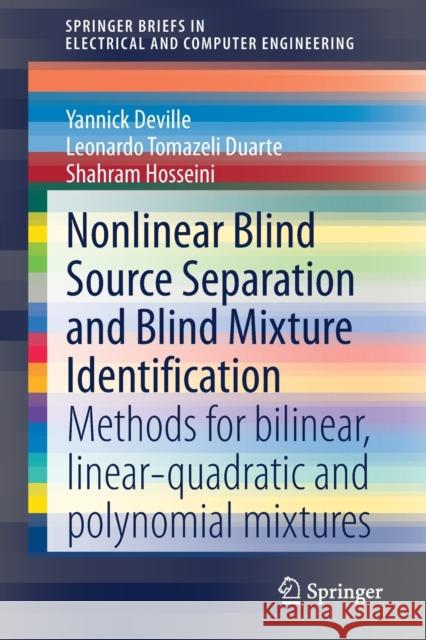Nonlinear Blind Source Separation and Blind Mixture Identification: Methods for Bilinear, Linear-Quadratic and Polynomial Mixtures » książka
topmenu
Nonlinear Blind Source Separation and Blind Mixture Identification: Methods for Bilinear, Linear-Quadratic and Polynomial Mixtures
ISBN-13: 9783030649760 / Angielski / Miękka / 2021 / 71 str.
Nonlinear Blind Source Separation and Blind Mixture Identification: Methods for Bilinear, Linear-Quadratic and Polynomial Mixtures
ISBN-13: 9783030649760 / Angielski / Miękka / 2021 / 71 str.
cena 201,72 zł
(netto: 192,11 VAT: 5%)
Najniższa cena z 30 dni: 192,74 zł
(netto: 192,11 VAT: 5%)
Najniższa cena z 30 dni: 192,74 zł
Termin realizacji zamówienia:
ok. 22 dni roboczych
Bez gwarancji dostawy przed świętami
ok. 22 dni roboczych
Bez gwarancji dostawy przed świętami
Darmowa dostawa!
Kategorie:
Kategorie BISAC:
Wydawca:
Springer
Seria wydawnicza:
Język:
Angielski
ISBN-13:
9783030649760
Rok wydania:
2021
Wydanie:
2021
Numer serii:
000450917
Ilość stron:
71
Waga:
0.13 kg
Wymiary:
23.39 x 15.6 x 0.43
Oprawa:
Miękka
Wolumenów:
01
Dodatkowe informacje:
Wydanie ilustrowane











